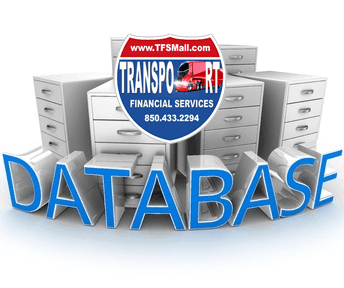One of the biggest technology disruptors when it comes to shuttling people is now trying to transform the way goods are moved around the country.
This spring, Uber launched Uber Freight, an app that matches truck drivers with loads of goods to pick up and deliver. Texas played a key role in the San Francisco-based tech giant’s inroads. Routes between Dallas, Houston and San Antonio served as its test ground before the app’s launch.
Texas’ large trucking business made it an obvious place to start, said Jeff Ogren, head of driver community and partnerships for Uber Freight. 14% of U.S. freight comes in and out of Texas, he said.
The state has continued to play a vital role in Uber’s young business. About 70% of Uber Freight’s loads and drivers are based in Texas, Ogren said.
The new business comes at a time when tech companies are exploring the future of trucking and automation. But analysts warn that Uber will need to offer something new to an industry that already has squeezed out greater efficiency and prove itself to truck drivers who may be skeptical of an unfamiliar player.
Mike Ramsey, a transportation and mobility analyst for Gartner, said Uber’s new app is a way to leverage the technology that underpins its ride-hailing and food delivery business. It is also a way to learn a new industry, so it can explore ways to boost efficiency in the future with tools like automation, he said.
“What they are now is a technology company,” he said. “Their aspiration seems to be a transportation company.”
Ramsey said Uber has an edge with brand recognition, talent and capital, but he cautioned that its major leadership shakeup could shift business priorities. Uber CEO Travis Kalanick resigned in June after months of reports of workplace discrimination, sexual harassment and practices that flouted law enforcement.
And he added that the Uber Freight app isn’t as pioneering as the ride-hailing one. “They’re trying to offer a better mousetrap for a mousetrap that exists,” he said.
Crowded Field
With its foray into trucking, Uber must compete with logistics companies, freight matching websites called load boards and other apps.
Similar to the ride-hailing app, Uber Freight allows truck drivers to pick up extra work when they want to. They also can find a job that fills up their truck on the way home.
For Sam Carrillo, an Arlington resident and independent truck driver, apps have made work simpler and more lucrative. For nearly two decades, he’s relied on brokers to match him with freight from electronics to bottled water in his truck. Now, he gets almost all of his business from two apps — one of which is Uber Freight.
Before, he had to wait a month or longer for payment. Now, he said he receives it in seven days — and without docked broker fees. He said he ends up making $200 to $400 more per trip.
And the apps are a quicker way to find jobs. “Press a few buttons, and you’re set,” he said.
Ogren said there’s an appetite for new tech in the trucking industry. Before working for Uber, he worked at Trucker Path, a navigational app that took off in popularity with truck drivers.
“These guys are looking for tools to better empower their lives,” he said. “They’re away from their family 200 days a year. If you can develop tools, they are going to buy in.”
Ogren said Uber wants to stand out from load boards and brokers through better customer service and faster pay. It plans to offer perks, such as reserved parking spots, passes that allow them to skip weigh stations, and discounts on fuel and tires. He said the company also may add a guide to truck stops and rest stops for drivers.
He declined to give the number of active users in Texas or the United States, but he did say that a recent party drew about 100 current users — both drivers and fleet owners — to Dallas. It featured free barbecue, shirts and hats, and allowed drivers to get their questions answered.
“We plan on continuing to do things like that because we know we have to earn their trust,” he said. “We want to eliminate any skepticism and show them we’re here for you.”
He said the apps could make the industry more appealing for younger people as truck drivers age and start retiring. “They want to be heard. They want to be treated with respect,” he said. “We want to make trucking attractive again.”
Texas Traffic
Texas’ central location and large workforce makes it a major player in the trucking industry. Nearly 10% of the nation’s truck transportation workforce lives in Texas. The Lone Star State has about 137,300 people in the industry, according to the most recent data from the Bureau of Labor Statistics. The Dallas-Fort Worth area has the third-highest number of tractor-trailer drivers, trailing only New York and Chicago, according a recent study by Dallas consulting firm Site Selection Group.
For the tech company, the new model cuts out the middleman — the trucking broker — and could lower the price for smaller companies that don’t want a long-term contract or need additional pickups.
Uber has shown interest in trucking before. About a year ago, it bought self-driving truck company Otto. The startup now has been wrapped into a research group focused on autonomous cars and trucks.
Owner-Operator Independent Drivers Association, an advocacy group that represents professional truck drivers, is watching the apps closely to see if they benefit members, said its spokeswoman, Norita Taylor.
She said she’s not surprised tech companies have recognized the money that can be made in the trucking industry. “The question is ‘Can they offer something that benefits independent truckers or not?’ ” she said. “And I don’t have an answer to that yet.”












